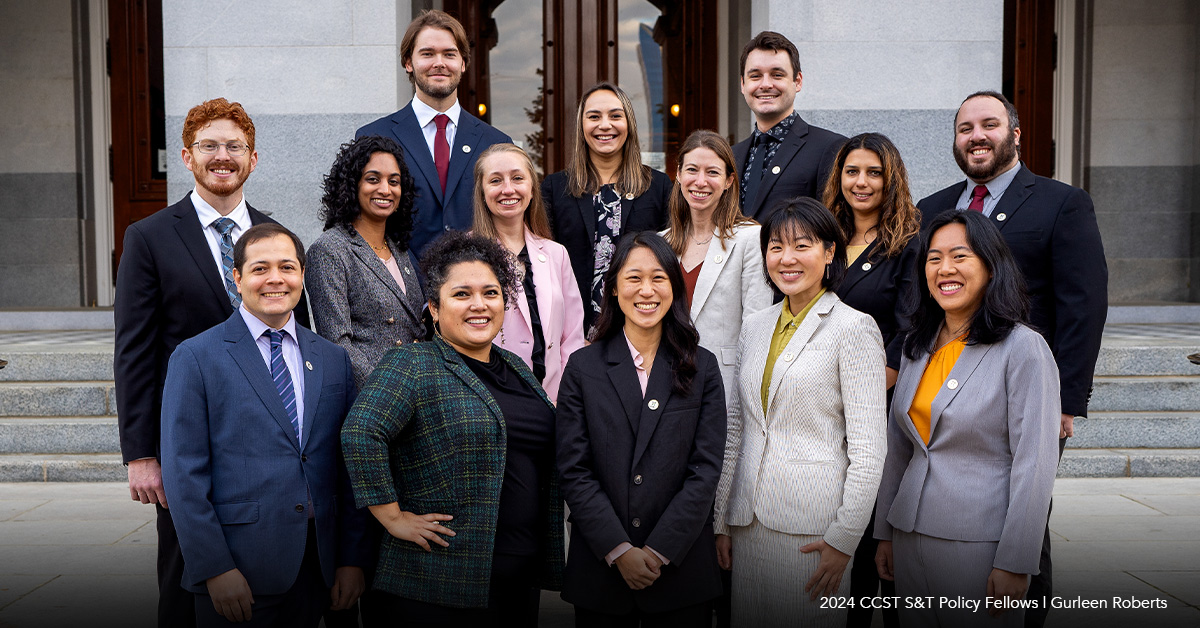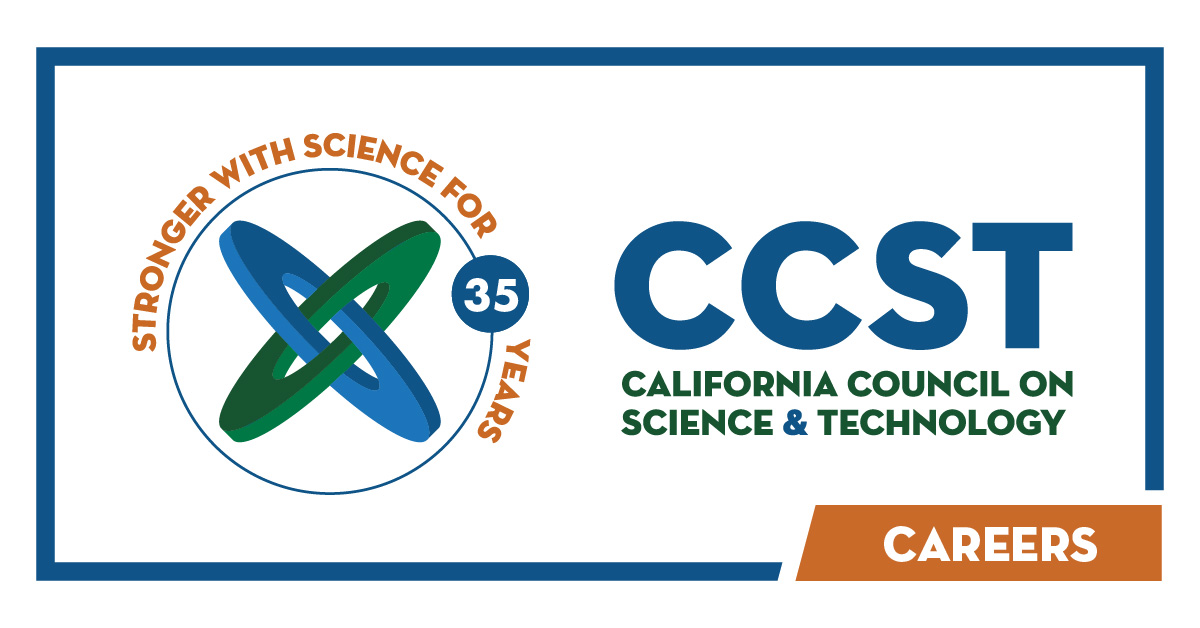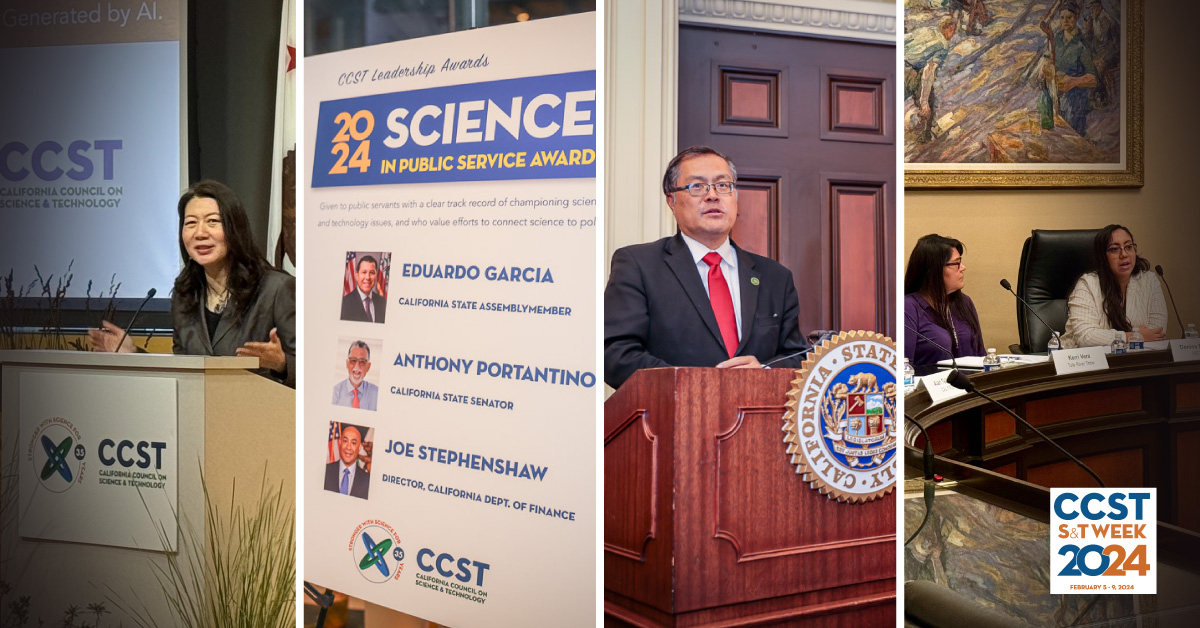Top Five Lessons Learned: Delivering a Virtual Fellows Training Program During COVID-19
February 9, 2021 | CCST Newsroom, CCST S&T Policy Fellows
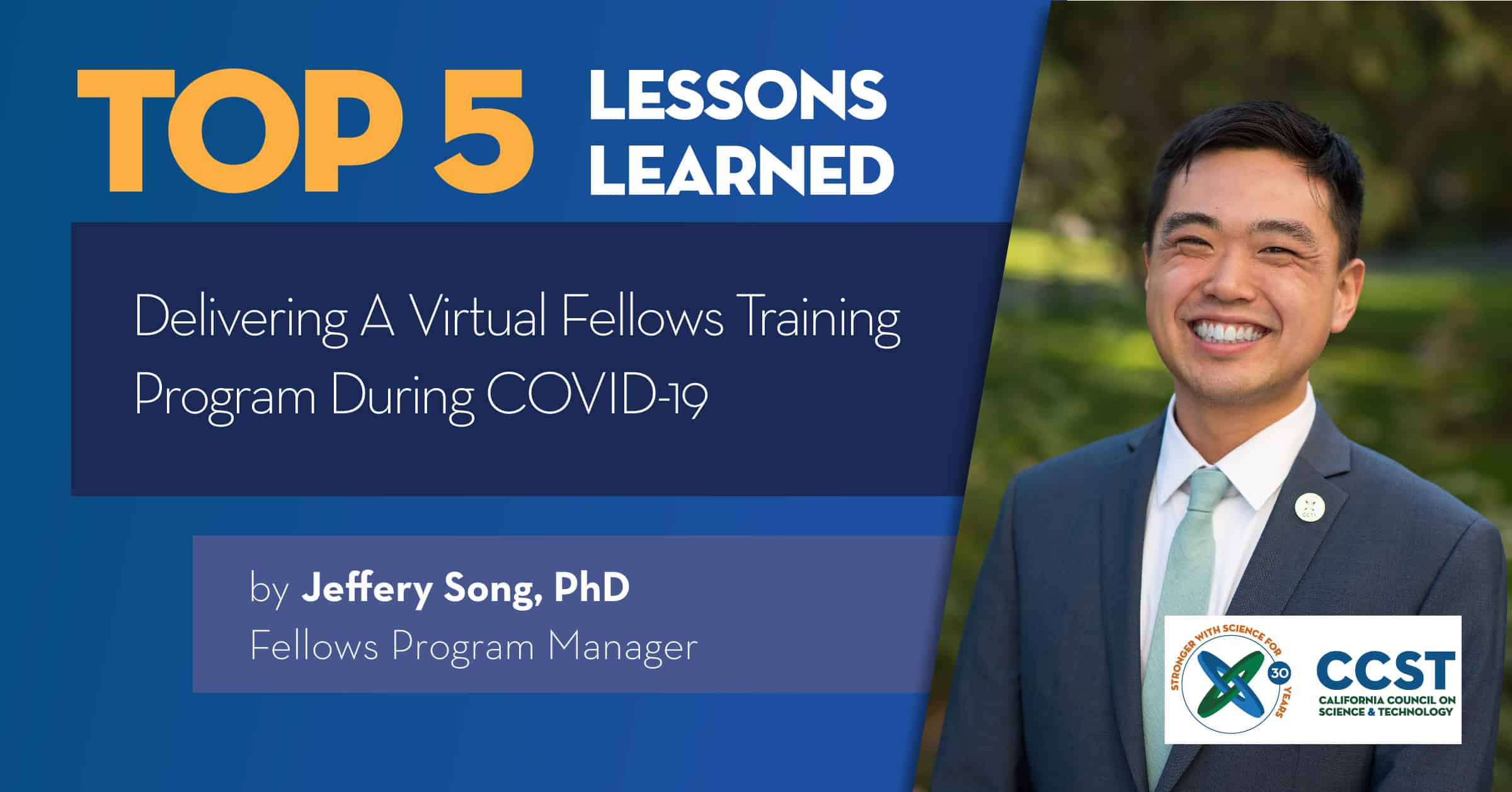
Jeffery Song is the CCST Science & Technology Policy Fellows Program Manager. In this role, he provides end-to-end administration of all aspects of the Fellowship program, from recruitment and selection to training and coordinating placements. Jeffery worked most recently as a Transportation Policy Postdoctoral Researcher at University of California – Davis. Prior to that, he was a 2018 CCST Science & Technology Policy Fellow placed in the Senate Transportation and Housing Committee. Jeffery has a joint PhD in Engineering and Public Policy and in Civil and Environmental Engineering from Carnegie Mellon University and a BS in Environmental Engineering from Johns Hopkins University.
Note: CCST is seeking applications through March 1st for the upcoming 2022 class of CCST Science & Technology Policy Fellows.
November is my favorite time of the year as the CCST Science & Technology Policy Fellows program manager—and as an alum (’18). The new class of Fellows have just arrived in Sacramento and are starting their Fellowship year with a month-long orientation and policy training program. As they get to know each other, we take them through the ins and outs of California policy, politics, and processes through lectures, panels, workshops, interactive activities, and field trips. It’s an enriching time of learning, bonding, networking, and immersion in their new California policy world before being placed into their policy offices—plus it’s a lot of fun.
However, this year the training for the 2021 CCST Science Fellows—much like the rest of the Fellows programming—had to be overhauled for a virtual environment due to the COVID-19 pandemic. This posed a huge challenge for myself and the rest of the CCST Fellowship program staff. We knew we had to work to transform our normal training program beyond just substituting a Zoom room for the CCST conference room.
Now that the training has wrapped up and the Fellows have been placed, I wanted to take time to reflect and share some of the key lessons I learned through this experience, which I hope can be transferable to many of your work contexts.
Top 5 Lessons Learned
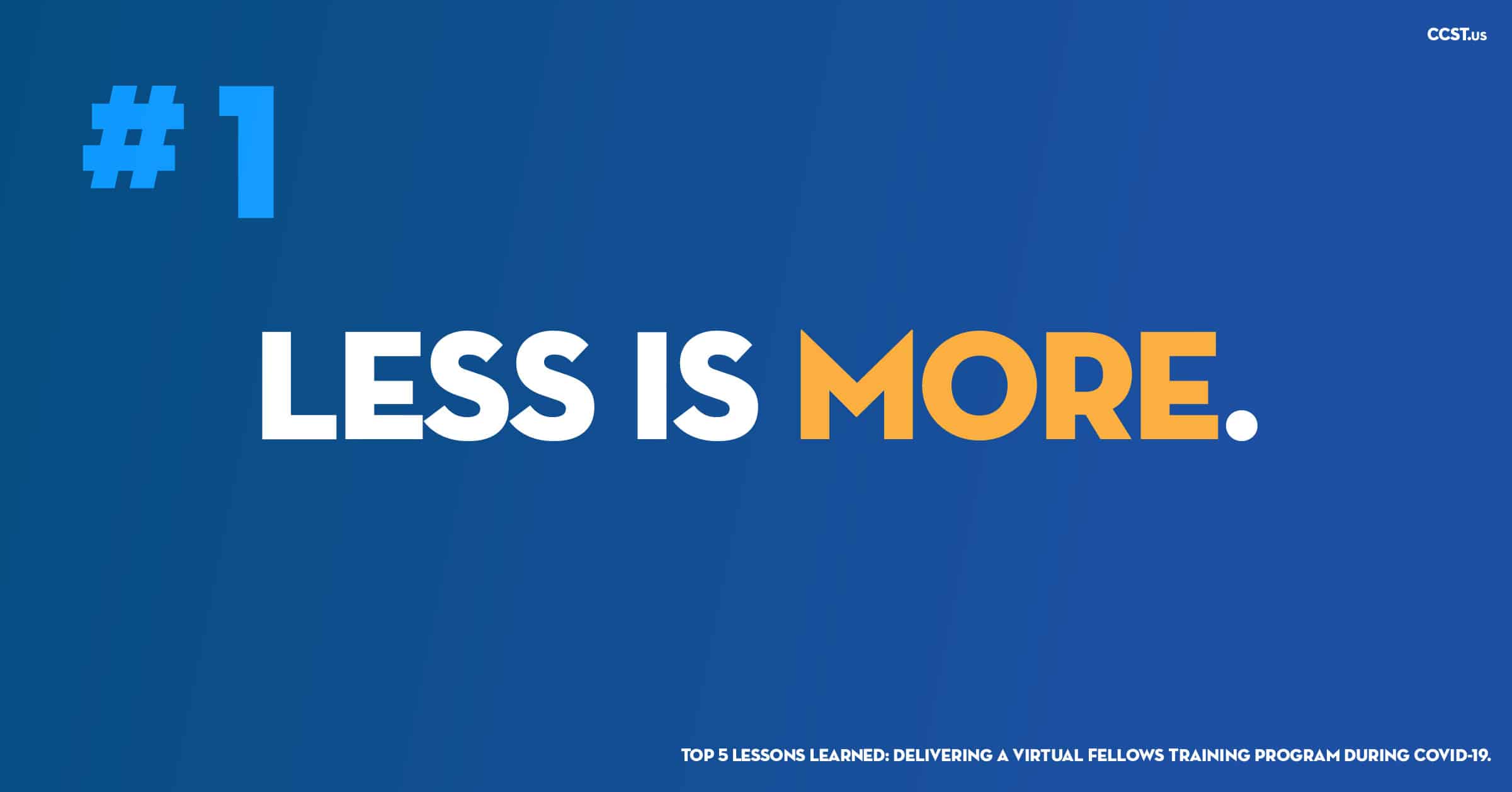
#1. Less is more.
Zoom fatigue is real, and something we wanted to minimize during the virtual training. One way I learned to do this is to simply do fewer things. Our typical in-person training schedule is full of panels, conversations, working lunches, activities, and happy hours with little downtime. This is intended to create an immersive and intense experience of learning and networking. However, we knew that this wouldn’t translate well into a Zoom environment.
We analyzed the training curriculum and calendar and prioritized what was most important to provide at the start of the Fellowship, and what could wait for the ongoing professional development seminars we host throughout the year for the Fellows. This enabled us to schedule shorter days on Zoom and build in longer breaks between training sessions.
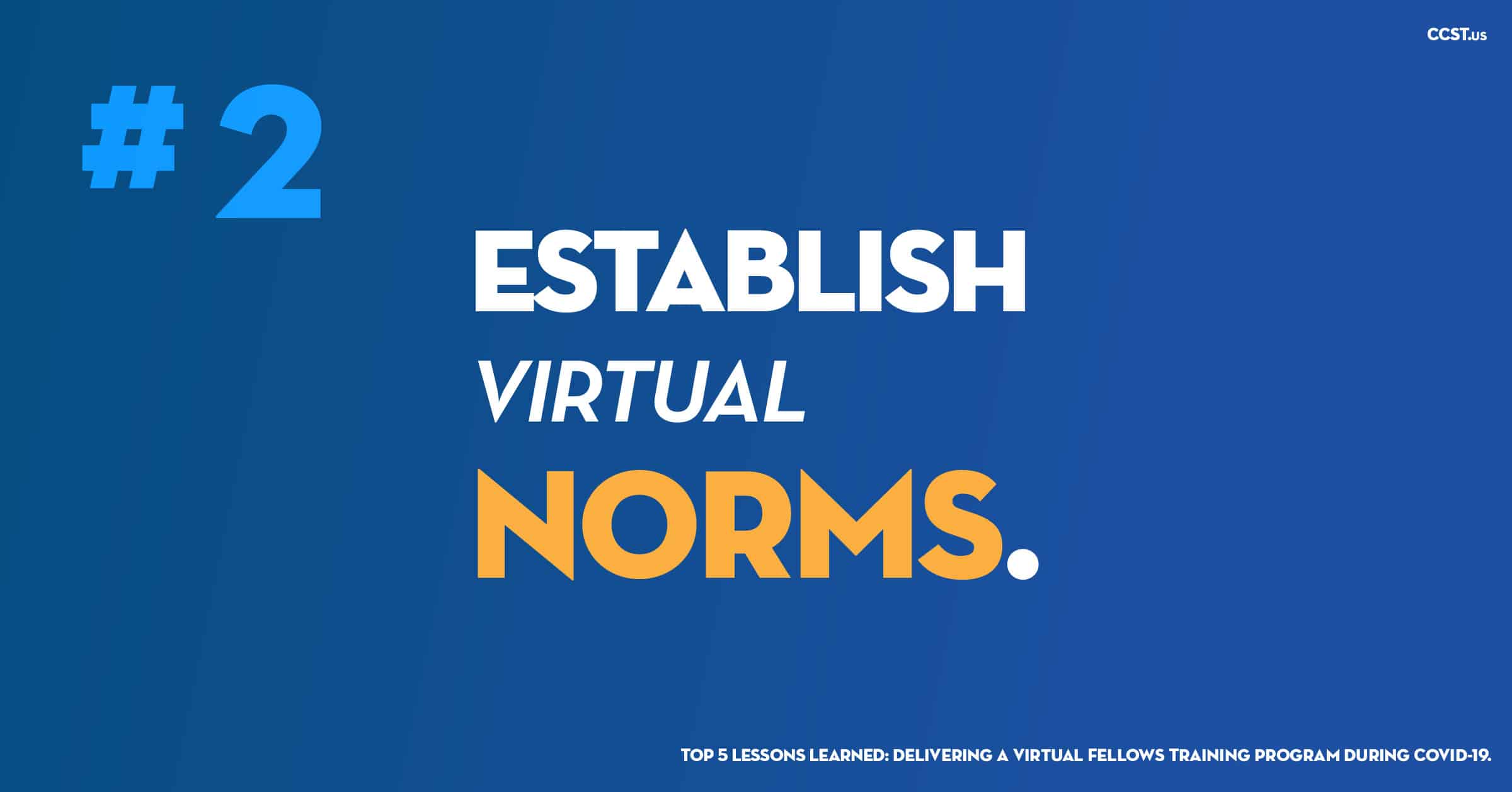
#2. Establish virtual norms.
Zoom and other virtual rooms can be a difficult place to navigate, since workplace and meeting norms are often unclear and hard to read without being physically present. To address this and to create an inclusive environment for the Fellows, I set clear Zoom meeting norms and expectations. One was to have video on when able during training sessions—to encourage the personal connections in this new group—but to also make it clear that Fellows could turn off their video or step away as needed, without explanation.
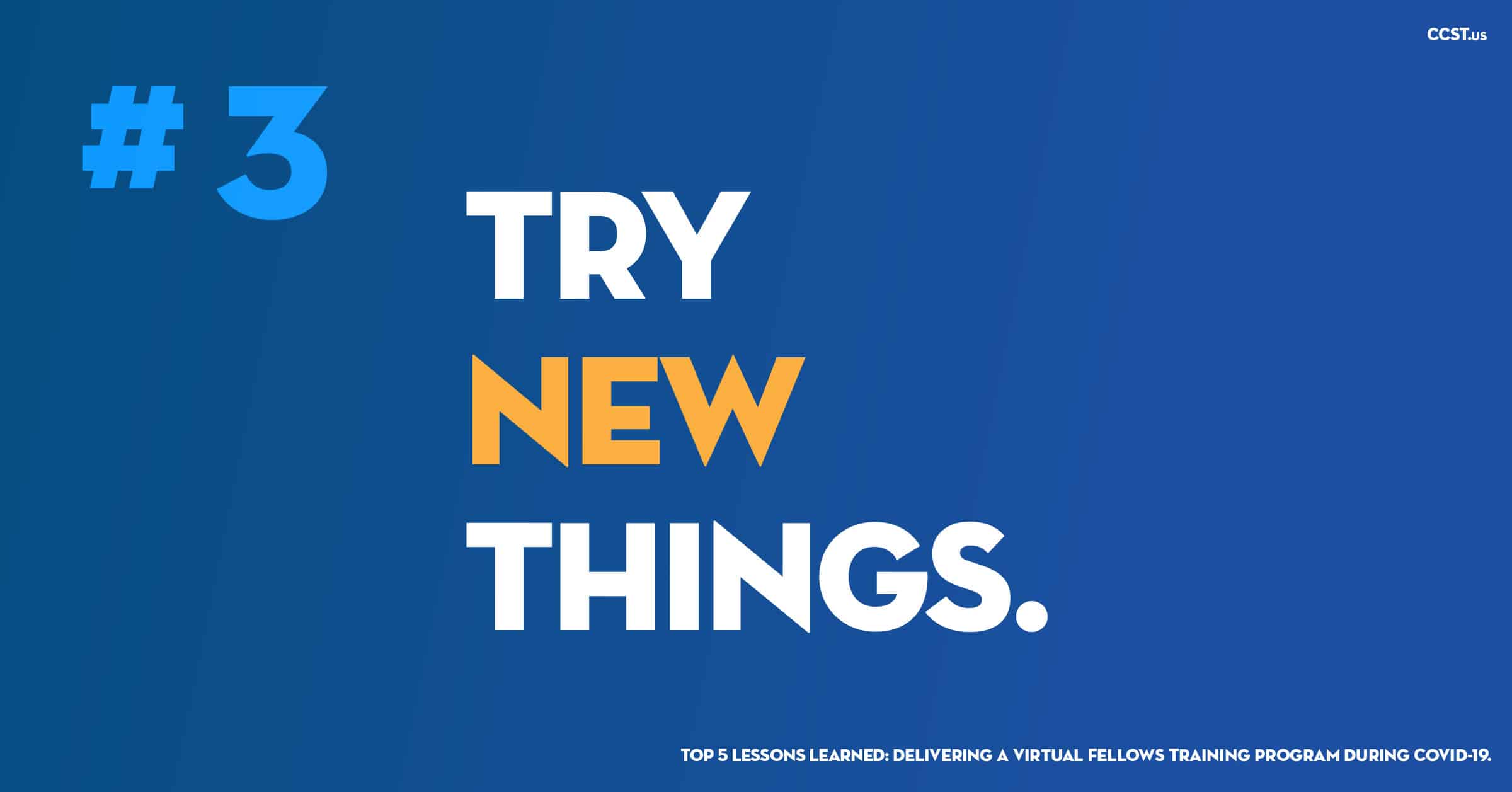
#3. Try new things.
The virtual format provided some small benefits that we could take advantage of as we tinkered with the format of our training sessions. For example, panels with guest speakers who would normally present to all 15 Fellows could become small group discussions in virtual breakout rooms. These smaller sessions afford each Fellow more of an opportunity to engage and were very easy to coordinate online relative to doing so in-person.

#4. Communicate. Communicate. Communicate.
One of the main challenges of the virtual workplace is miscommunication. Without face-to-face interactions, we lose a lot of non-verbal communication and tone via the virtual tools and it can be hard to feel connected to and supported by your workplace. To address that for the virtual orientation program, I utilized multiple methods of communication. For example, I would follow-up verbal program announcements delivered on Zoom with written ones. I also worked to be very transparent and timely about communicating all of the relevant information related to the orientation (e.g., meeting agendas, processes and scheduling) so that Fellows could feel prepared and supported.

#5. Do it together.
The biggest lesson I learned from adapting a Fellowship program to a virtual environment is that I had to admit that I didn’t have all of the answers. This was uncharted territory for all of us, and we knew we would have to do it together. I received so much generous and thoughtful feedback from the 2020 Fellows cohort who had adapted to a remote Fellowship experience. I was very pleased to work with Geoff Hollett (’20) who joined CCST after his Fellowship and contributed his unique perspective and talents to help shape and coordinate this year’s virtual training program. I’m also so grateful for all of my teammates here at CCST who are willing to step in and help whenever needed. Finally, CCST is always grateful for the incredible support of the larger Fellows alumni network who come through each year to train, mentor, and support each subsequent class of Fellows.
Also, the 2021 Fellows were given opportunity to provide lots of feedback and help shape their experience, as we were navigating this virtual training together. I am grateful for their flexibility, adaptability, and desire to make an impact on California policy-making, and excited to see where they go in their Fellowship experience and beyond.
While I do hope we will return to in-person training for the upcoming 2022 class, accepting applications through March 1st, I’ve learned a lot through this virtual experience and I’ll be returning to much of this advice myself, even in-person.
About the CCST Science & Technology Policy Fellowship
The CCST Science & Technology Policy Fellows program trains scientific thinkers to be policy-savvy, while helping equip California’s decision makers with science-savvy staff. The program was established in 2009 with funds from the Gordon and Betty Moore Foundation and other generous friends. Discover how our CCST Science Fellows make a difference in California’s policy arena at ccst.us/ccst-science-fellows-program.

